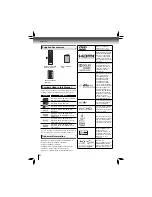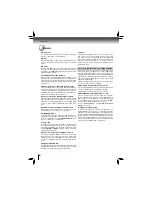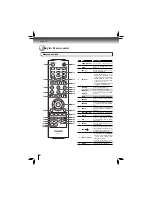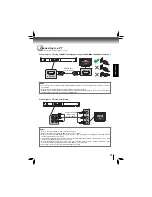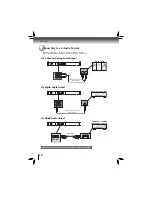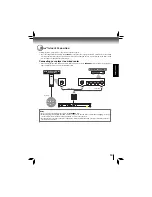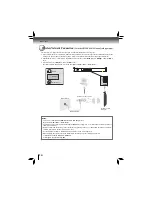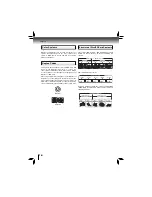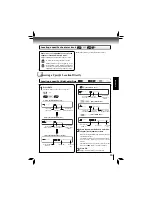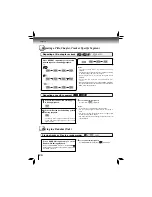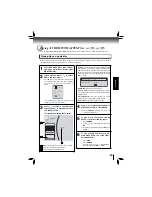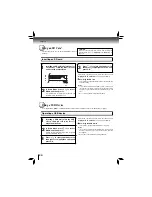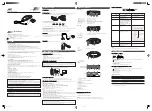
11
CONNECTIONS
Connecting to a TV using an HDMI
®
cable (Supports up to 1080i/1080p, 1080p/24F resolution.)
Notes:
Do not tilt the connector when inserting it into the HDMI jack, and make sure the shapes of the jack and the connector
•
are matched.
When using non-HDCP compatible TV, the image will not display properly.
•
An HDMI cable carries both video and audio signals. If you want to use TV speakers, you do not need to make an
•
additional audio connection if you are using an HDMI cable.
Notes:
Refer to the owner’s manual of the connected TV as well.
•
When connecting to a TV using an HDMI cable, no video output.
•
When you connect the DVD player to your TV, be sure to turn off the power and unplug both units from the wall
•
outlet before making any connections.
If your television set has one audio input, connect the left and right audio outputs of the DVD player to a Y cable
•
adapter (not supplied) and then connect to your TV.
Connect the DVD player directly to your TV. If you connect the DVD player to a VCR, TV/VCR combination or video
•
selector, the playback picture may be distorted as DVDs are copy protected.
Analog audio out will not have sound if DTS playback is selected.
•
Connecting to a TV using an A/V cable
AUDIO IN
R
L
VIDEO IN
LAN
USB
HDMI OUT
ANALOG
COAXIAL DIGITAL
Composite audio
video cable
(not included)
ANALOG
COAXIAL DIGITAL
Standard
Definition
TV
HDMI IN
HDMI Cable
(not included)
HDMI OUT
LAN
USB
HDMI OUT
ANALOG
COAXIAL DIGITAL
High
Definition
TV
Connecting to a TV
Connect the Blu-ray Disc™ player to your TV.




